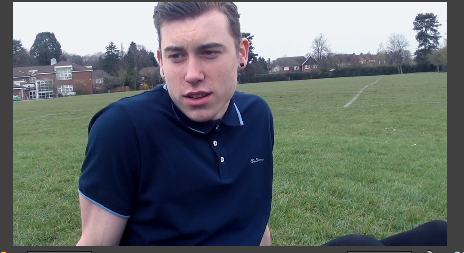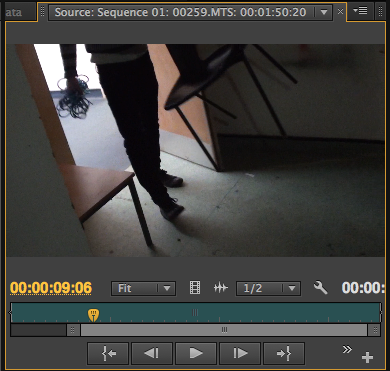After submitting our final product, throughout endless editing and reshooting, we felt we must analyse and evaluate what went well and what didn't.
Camera Work
Many of our shots had to be revised due to lax camera work, one or two of which are still evident in the piece: There were some shots in which segments of peoples head were not in the frame of the camera and looked sloppy and unprofessional:

Depicted above is an example of sloppy camerea work, part of my head is not in the frame of the shot. We managed to identify most of these mistakes, however unfortunately, this remained in our final cut. There is little else with the shot apart from this fault, however, it is still poor camera work. However, one thing that can be praised in this scene was our ability to adhere to the 180° rule, we never broke this rule and therefore retained a sense of continuity throughout our production.

It could be argued that this is a poor shot: nearly the entire torso is ommitted from the frame and the camera is tilted at an angle. However, the ambiguity that this shot presents the audience with is actually quite favourable when considering the context of our film: at this point the audience aren't supposed to know who this person is, which adheres to the codes and conventions of thrillers - the opening sequence of a film is designed to establish character and narrative context, however, it is important that we retain some level of enigma - questions that would be answered later on in the film/text. Therefore, this sense of uncertainty plays into our hands, as it expresses the essential features of our production such as uncertainty and evil.
We set out to make "Dinner For Two" a pastiche of Hitchcock's "Psycho" (1960) with undertones and elements of "Taken" (2008). We feel we have acheived some of the effects that Hitchcock employed such as non-diegetic sounds that allow the audience to get an insight into the mentality of the victim, and also build suspense and provoke a reaction. Primarily, we felt it was important that we manipulate a passive audience, as is typical with thrillers - the audience have a relatively good idea of what may happen - they just don't know when it will happen.
Through the process of planning, our thriller developed into a horror thriller as we were inspired by the effects/techniques used by films such as "The Purge
No comments:
Post a Comment